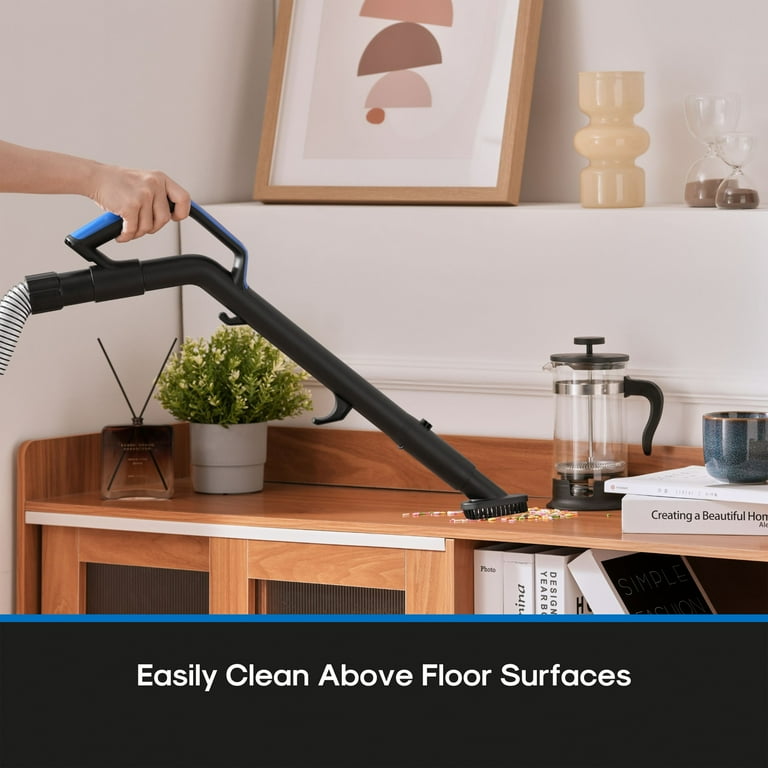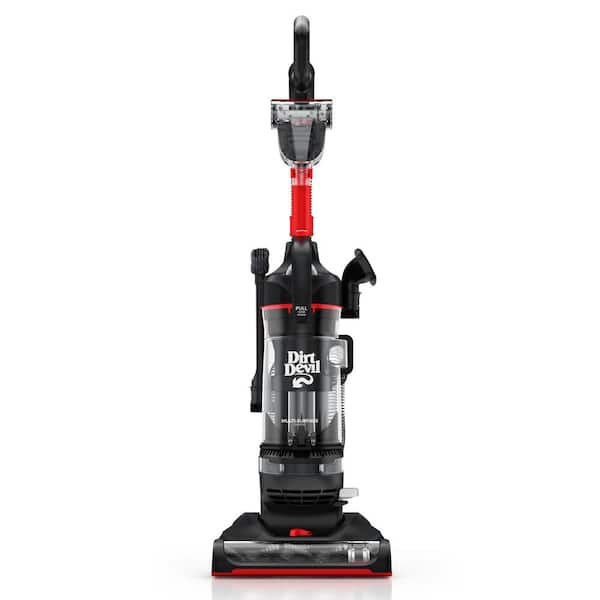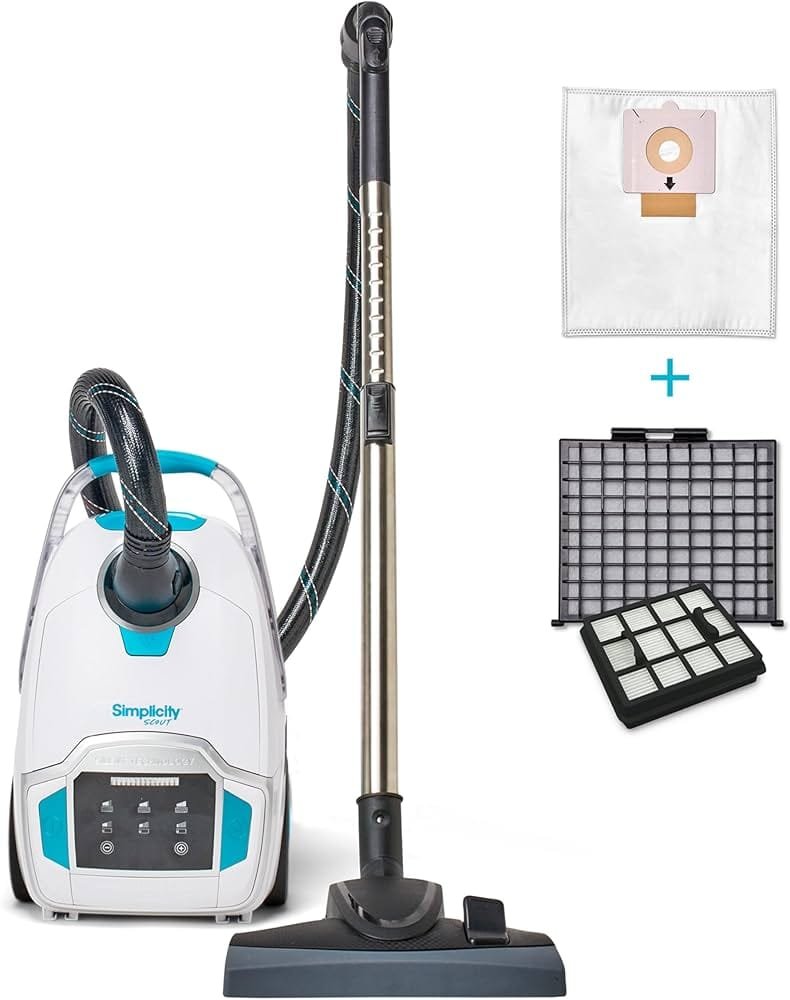Cleaning above-floor surfaces can be tricky without the right tools. A vacuum can make this job easier and more efficient.
Using a vacuum to clean above-floor surfaces saves time and effort. It reaches areas that are often neglected, like shelves, curtains, and furniture. Many people struggle with dust and dirt in these places. With the right vacuum attachments and techniques, you can keep these areas spotless.
This guide will help you understand how to use your vacuum effectively. You will learn tips to make cleaning faster and more thorough. Ready to make your home cleaner than ever? Let’s dive in!

Credit: www.walmart.com
Choosing The Right Vacuum
Cleaning above-floor surfaces can be tricky. With the right vacuum, it becomes easier and more efficient. Whether it’s furniture, shelves, or curtains, selecting the perfect vacuum makes a difference.
Types Of Vacuums
There are several types of vacuums available. Each serves a specific purpose. Handheld vacuums are portable and convenient. They work well for small spaces. Stick vacuums are lightweight and versatile. They can handle different surfaces. Upright vacuums are powerful and durable. They are great for larger areas. Canister vacuums offer flexibility and strong suction. They are ideal for varied cleaning tasks.
Features To Look For
When choosing a vacuum, consider the features. Look for strong suction power. It ensures thorough cleaning. Check for attachments. They help clean different surfaces. Consider the weight and design. A lightweight vacuum is easier to handle. Look for a long cord or battery life. It allows more freedom while cleaning. Check for filters. Good filters trap dust and allergens. This keeps the air clean.
Preparing The Area
Clear the area before vacuuming above-floor surfaces. Remove obstacles and dust furniture for effective cleaning. This ensures a smoother process.
Preparing the area before you start vacuuming above-floor surfaces is essential for an effective cleaning session. A well-prepared space ensures that you won’t miss any spots and that the vacuum can do its job properly. Let’s dive into the key steps to prepare your area.Clearing Clutter
Begin by removing any items that might obstruct your path or get in the way of the vacuum. Things like toys, books, and small furniture pieces should be relocated temporarily.This not only makes the process smoother but also prevents any damage to those items. Think about the last time you had to stop and move something out of the way—annoying, right?Having a clear space allows you to move freely and ensures that you can reach every corner.Dusting Before Vacuuming
Before you start vacuuming, take a few minutes to dust surfaces like shelves, tables, and picture frames. Use a microfiber cloth or a duster to capture dust without spreading it around.Dusting first ensures that any particles that fall to the floor can be vacuumed up afterward. It’s a simple step that many people skip, but it makes a huge difference.Have you ever vacuumed and then noticed dust settling again almost immediately? Dusting beforehand prevents this from happening.By following these steps, your vacuuming will be more effective, and your space will stay cleaner for longer. So, what’s stopping you from giving it a try?Using Attachments Effectively
Cleaning above-floor surfaces can be a challenge without the right tools. Using vacuum attachments effectively can make this task easier. Attachments help you reach tight spaces, clean delicate items, and handle various surfaces. Here’s how to use them effectively.
Common Attachments
Most vacuums come with a set of common attachments. These include the crevice tool, dusting brush, and upholstery tool. The crevice tool is perfect for narrow gaps. Use it between couch cushions or along baseboards. The dusting brush is gentle on delicate items. Clean lampshades, blinds, and bookcases with it. The upholstery tool is designed for fabric surfaces. Use it on sofas, chairs, and car seats.
Specialized Tools
Some vacuums have specialized tools for specific tasks. A pet hair brush is great if you have pets. It removes fur from furniture and carpets. A mattress tool helps keep your bed clean. It picks up dust and allergens from your mattress. A flexible hose attachment can reach awkward spots. Clean under appliances or behind heavy furniture with ease. Another useful tool is the mini motorized brush. It’s ideal for stairs and car interiors. It offers powerful cleaning in a compact size.
Using these attachments effectively ensures a thorough clean. Each tool has a purpose and can make your cleaning routine more efficient. Experiment with different attachments to see which work best for your home.
Credit: kenmorefloorcare.com
Vacuuming Upholstery
Keeping your upholstery clean enhances your living space. It also extends the life of your furniture. Using a vacuum can make this task easier. It helps remove dust, dirt, and allergens that settle in fabric.
Cushions And Pillows
Start by vacuuming cushions and pillows. Remove them from the furniture. Use the upholstery attachment on your vacuum. Move the vacuum in straight lines. This helps pick up more dirt. Don’t forget the sides and back of each cushion. Flip the cushions and repeat on the other side. For pillows, use the same technique. Hold the pillow firmly to avoid pulling the fabric.
Cleaning Crevices
Crevices can hold a lot of hidden dirt. Use the crevice tool on your vacuum. Run it along seams and folds. Pay extra attention to corners. Dirt tends to accumulate there. Move slowly to ensure thorough cleaning. For tight spots, use a small brush attachment. It helps dislodge dirt trapped in hard-to-reach areas.
Cleaning Curtains And Drapes
Cleaning curtains and drapes can be a challenging task. Dust and dirt easily accumulate on these surfaces. Regular vacuuming helps maintain their appearance and prolongs their life. Using the right techniques ensures that you don’t damage the fabric.
Gentle Suction Techniques
Always use a vacuum with adjustable suction settings. Set it to the lowest setting. This helps protect delicate fabrics. Attach a soft brush nozzle to your vacuum. Gently glide the nozzle over the curtains or drapes. Move from top to bottom. This prevents dirt from spreading. For thicker fabrics, you can use a slightly higher suction setting. Test on a small area first. This ensures the fabric does not get damaged.
Vacuuming Rods And Hooks
Don’t neglect the rods and hooks. Dust accumulates here too. Use a crevice tool for these areas. Run the vacuum along the rods. Pay attention to the hooks. Dust can gather in small crevices. Regular cleaning of these parts prevents buildup. It also ensures smooth operation of your curtains or drapes. Keeping these components clean enhances the overall look of your window treatments.
Dusting Shelves And Cabinets
Cleaning above-floor surfaces like shelves and cabinets is easy with a vacuum. Use the brush attachment to remove dust. Reach corners and edges for a thorough clean.
Dusting Shelves and CabinetsAbove-floor surfaces like shelves and cabinets often gather a lot of dust. Cleaning these areas can be a challenge, especially if they are high or filled with items. Using your vacuum cleaner can make this task easier and more efficient. Here are some practical tips to help you get started.Adjusting Suction Power
First, adjust the suction power of your vacuum cleaner. Strong suction can damage delicate items or even pull lightweight objects off the shelves.Set your vacuum to a lower suction setting for shelves with fragile items. You can increase the power for sturdier surfaces or places with lots of dust.Many vacuums have adjustable suction settings, so find the right balance for each surface. This ensures effective cleaning without causing damage.Reaching High Places
Reaching high places can be tricky, but it’s important for a thorough clean. Use the vacuum’s extension wand to access those hard-to-reach areas.Stand on a sturdy step stool if needed, but ensure your safety first. Attach a soft brush to the wand to prevent scratching surfaces.You can also use a dusting brush attachment. This will help remove dust without pushing it into the air. Remember to move items on the shelves to clean underneath them as well.Cleaning above-floor surfaces doesn’t have to be a daunting task. By adjusting your vacuum’s suction and using the right attachments, you can efficiently dust your shelves and cabinets.What surprising places have you found dust hiding? Share your tips for tackling those tricky spots!Vacuuming Ceiling Fans
Ceiling fans are often overlooked in cleaning routines, but they collect dust and grime that can affect air quality. Cleaning them with a vacuum is efficient and reduces the spread of dust. Here’s a practical guide to help you clean your ceiling fans using a vacuum cleaner.
Using Extension Wands
Extension wands are a game-changer for reaching high places. Attach the wand to your vacuum and extend it to reach the ceiling fan without a ladder. This method is safer and quicker.
Ensure the wand is securely attached to avoid accidents. Use a steady hand to guide the vacuum across the fan blades. This prevents the fan from spinning while you clean.
Have you ever struggled with dust falling while cleaning? Extension wands minimize this by suctioning dust directly into the vacuum. This keeps your floors cleaner as you work.
Cleaning Fan Blades
Fan blades accumulate a surprising amount of dust. Use a brush attachment on your vacuum to clean each blade thoroughly. Start from the top and work your way down.
Hold the fan blade steady with one hand and vacuum with the other. This prevents the blade from moving and ensures a thorough clean. Repeat this for each blade, taking care to get both sides.
Have you noticed how dust can trigger allergies? Keeping fan blades clean reduces allergens in your home. This simple task makes a big difference in air quality.
Incorporate these tips into your cleaning routine to keep your ceiling fans spotless. What other areas in your home could benefit from a similar approach? Share your thoughts and experiences in the comments!
Maintaining Your Vacuum
Maintaining your vacuum is crucial for ensuring it operates efficiently and lasts longer. Regular maintenance not only keeps your vacuum working at its best but also enhances your cleaning efforts. Let’s explore some key maintenance tips that can help you get the most out of your vacuum.
Regular Filter Cleaning
One of the simplest yet most effective ways to maintain your vacuum is by cleaning its filters. Dirty filters can reduce your vacuum’s suction power, making it less effective at picking up dirt and debris. Check your vacuum’s manual to find out how often you should clean or replace the filters.
Most vacuums have washable filters. If yours is washable, remove it and rinse it under cold water until the water runs clear. Let the filter dry completely before placing it back in the vacuum. If the filter is not washable, replace it as recommended by the manufacturer.
Don’t forget to clean any pre-filters as well. A clean filter ensures your vacuum runs smoothly and extends its lifespan. Have you noticed a drop in your vacuum’s performance? It might be time to check those filters!
Checking For Clogs
Clogs can seriously affect your vacuum’s performance. Regularly check the hose, brush roll, and other attachments for blockages. Even small obstructions can reduce suction and make cleaning more difficult.
If you find a clog, carefully remove it using a long, flexible tool or your hands if it’s easily accessible. Be sure to unplug the vacuum before attempting to clear any blockages to avoid accidents. Once clear, your vacuum will be able to perform at its full potential again.
Have you ever experienced a sudden loss of suction power? It might be due to a hidden clog. Regular checks can save you from this frustrating experience and keep your vacuum working efficiently.
Maintaining your vacuum doesn’t have to be a daunting task. By regularly cleaning the filters and checking for clogs, you can ensure your vacuum remains a reliable ally in your cleaning routine. Ready to give your vacuum some much-needed attention?

Credit: www.homedepot.com
Frequently Asked Questions
What Is The Bare Floor Setting On A Vacuum?
The bare floor setting on a vacuum adjusts the height for optimal cleaning on hard surfaces like tile or wood floors.
How To Clean A Floor With Vacuum Cleaner?
Turn on the vacuum cleaner. Adjust the settings for floor type. Move the vacuum slowly over the floor. Focus on edges and corners. Empty the vacuum bag or canister after cleaning.
Is It Better To Vacuum Or Sweep The Floor?
Vacuuming is generally better than sweeping. It removes more dirt, dust, and allergens from floors.
Can A Vacuum Be Too Strong For Carpet?
Yes, a vacuum can be too strong for some carpets. High suction can damage delicate fibers and cause wear.
Conclusion
Cleaning above-floor surfaces with a vacuum is simple and effective. Remember to use the right attachments for different areas. Regular maintenance keeps your home dust-free and healthy. Always empty the vacuum bag or canister when full. Check filters and brushes regularly.
Following these tips makes cleaning easier. A clean home feels fresh and inviting. Enjoy a spotless space with minimal effort. Happy vacuuming!

